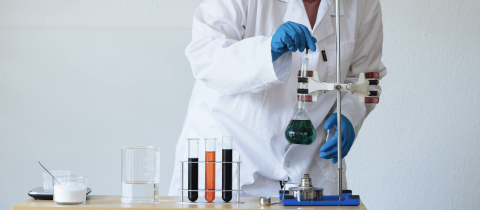We have become familiar with the routine at airports. Your carry-on bags are passed through an x-ray machine after which an officer will often wipe your bag with a piece of fabric which is then placed inside a box-like instrument. Within a few seconds you get the all-clear signal and you are on your way to the gate. How many travelers get handcuffs instead of an all-clear isn’t known because those stats are not released. What do these instruments actually do? When luggage is bombarded with x-rays, some of the rays pass through and some do not, depending on what they encounter. The more dense a material is, the less transparent it is to x-rays. Lead, for example, prevents any x-rays from passing through. To put it simply, the intensity of the x-rays that have passed through the luggage is a measure of the density of the substances contained in the luggage. Different substances will have unique densities and the densities of various explosives have been determined. The x-ray machine then compares the densities detected by the passage of x-rays to the predetermined densities of a host of suspect substances.
The instrument that analyzes the swabs is an “ion mobility spectrometer.” When the swab is inserted, a gust of a carrier gas dislodges some of the molecules that have been collected from the luggage. These molecules are then subjected to bombardment by electrons, commonly from a Nickel-63 isotope source. The bombardment creates ions that are swept through a tube where they are subjected to an electric field resulting in a separation by mass, size and shape of the molecules. These ions are detected and compared with those produced by known samples.
The technology is extremely sensitive and can detect trace amounts of explosives. It is not dependent on having nitrogen in the sample, an element found in almost all explosives except in triacetone triperoxide (TATP). This is what was used in the Belgian and London bombings. TATP is often the choice of terrorists because it is easy to manufacture from acetone, hydrogen peroxide and an acid, all of which are readily available. Of course an explosive in luggage can only be detected if the luggage is inspected. But in the case of the Belgian airport bombing, the explosive was set off in the pre-screening area. To try to counter this, hand held detectors have been developed for use by officers who patrol all areas. When gaseous TATP molecules enter this sensor, they encounter an acid catalyst that converts TATP back into its constituent parts, acetone and hydrogen peroxide. The peroxide then reacts with dyes in the instrument causing them to change colour. By detecting these colour changes, the highly sensitive portable scanner can detect fewer than two parts per billion of TATP. But unfortunately no matter how clever the detector chemistry, it can’t foil all terrorists’ attempts.







